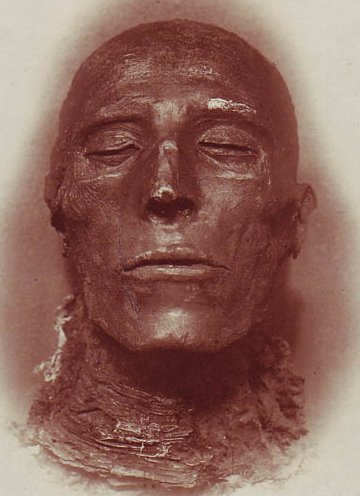
“The Six Gates” was the ninth installment of Sax Rohmer’s Fu-Manchu and Company. The story was first published in Collier’s on October 23, 1915 and was later expanded to comprise Chapters 27-30 of the second Fu-Manchu novel, The Devil Doctor first published in the UK in 1916 by Cassell and in the US by McBride & Nast under the variant title, The Return of Dr. Fu-Manchu.
The story opens, like many early Rohmer tales, with the unexpected arrival of a late night visitor. In this instance, Smith and Petrie are preparing for the raid on the Gables when Aziz, Karamaneh’s brother, turns up at Petrie’s door. While initially skeptical of trusting him, both men are quickly won over by the young man’s tale of how Karamaneh was abducted by Fu-Manchu’s minions shortly after he and his sister returned home to Cairo; how Karamaneh was rendered amnesiac by a drug administered by Dr. Fu-Manchu; and how Aziz followed their trail from Cairo to Rangoon to London in his desperate quest to free his sister from slavery. Smith and Petrie leave Aziz in police custody as they join Inspector Weymouth for the police raid on the Gables.
Smith and Petrie foolishly separate from the Scotland Yard men and encounter Karamaneh in the house. She warns them that they are walking into a trap, but Smith disregards her warning and he and Petrie step right into a trapdoor hidden behind a curtain. They recover consciousness to find Dr. Fu-Manchu gloating over their blundering incompetence. He mocks them for being inferior to children who learn from experience to fear fire lest they be burned a second time. Presently coming to the point, Fu-Manchu explains that Smith is to be tortured with the Six Gates of Joyful Wisdom while Petrie, his devoted friend, is provided with a samurai sword to end Smith’s sufferings if he dares.
The Six Gates are a cage with a series of movable doors that is placed over Smith’s bound body. The first door, the Gate of Joyous Hope releases four starved rats that begin gnawing at Smith’s feet. The second door is the Gate of Mirthful Doubt. The third door is the Gate of True Rapture. The fourth door is the Gate of Gentle Sorrow. The fifth door is the Gate of Sweet Desires. Each gate releases four more rats to ravage Smith’s body until reaching the sixth and final door, the Gate Celestial which, instead of releasing the last four starved rats on Smith’s face, hides something even more sinister that Fu-Manchu has prepared especially for Smith. The Devil Doctor points out that if Smith has the courage to sustain the first five Gates, the Samurai sword will not be necessary.
TO CONTINUE READING THIS ARTICLE, PLEASE VISIT HERE.





.jpg)